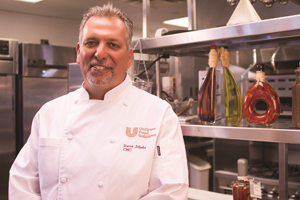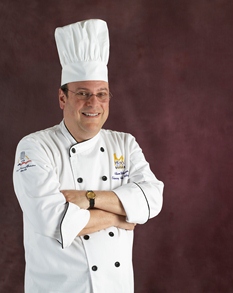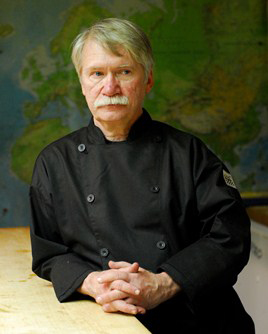Chefs Speak Out: A Modern Approach to Preserving the Past
 Through the free videos he helps produce for Unilever, Steve Jilleba stresses the need among current and future cooks to understand culinary origins and the impulses that inspired authentic flavors around the globe.
Through the free videos he helps produce for Unilever, Steve Jilleba stresses the need among current and future cooks to understand culinary origins and the impulses that inspired authentic flavors around the globe.
By Lynn Schwartz
“Today, everything moves quickly. There is a lot of cross-culturalization, and culinary traditions get mixed and blended,” says Steve Jilleba, CMC, corporate executive chef for Lisle, Ill.-based Unilever Food Solutions. “Original recipes and cooking techniques can become lost forever.”
The risk of unrecoverable culinary practices inspired Unilever and The Culinary Institute of America to partner in a preservation initiative, The World Culinary Arts DVD & Internet Project. “Savoring the Best of World Flavors” is an interactive series that provides a first-of-its-kind video reference library for future generations, documenting and conserving best culinary practices worldwide.
To date, this ambitious undertaking offers seven volumes featuring more than 16 countries including India, China, Japan, Vietnam, Greece, Sicily, Spain, Mexico, Peru and Brazil. “We are trying to preserve a country’s authenic culinary traditions,” says Jilleba.
To accomplish that, Jilleba and his team travel to a specific country and film the “experts” as they prepare time-honored recipes, divulge necessary ingredients and reveal cooking techniques. The interviews often discuss the dish’s development, geographic and historical implications, and examine how a dish has evolved in contemporary kitchens. The camera also catches visits to a variety of open-air street markets and long-standing food shops. The result is that the viewer, comfortably transported far and wide to each locale, is privy to a country’s past, present and future food culture—something most chefs would never have the opportunity to witness on such a large scale. The videos and podcasts are free of charge to foodservice professionals and students, and many of the recipes are available to download.

 Through culinary and reflective journaling, students can become empowered to consider broadly and deeply what they are learning and what they need to do in the future. Your role is simply to encourage them to write.
Through culinary and reflective journaling, students can become empowered to consider broadly and deeply what they are learning and what they need to do in the future. Your role is simply to encourage them to write. Give back, says Chef Weiner, and teach your students to, as well. Whether self-serving, altruistic or both, the many rewards—both personal and professional—far outweigh any inconvenience.
Give back, says Chef Weiner, and teach your students to, as well. Whether self-serving, altruistic or both, the many rewards—both personal and professional—far outweigh any inconvenience. Graduates need to crawl before they walk and walk before they run. What are the skill sets that chefs and restaurateurs expect your students to have when they start their employment? Can your students meet those expectations?
Graduates need to crawl before they walk and walk before they run. What are the skill sets that chefs and restaurateurs expect your students to have when they start their employment? Can your students meet those expectations? Greener Fields Together™, which documents farms’ sustainability gains, lauds four well-known produce suppliers that were recently recognized for significant improvements in waste reduction, CO2 emissions, water and energy use, and more.
Greener Fields Together™, which documents farms’ sustainability gains, lauds four well-known produce suppliers that were recently recognized for significant improvements in waste reduction, CO2 emissions, water and energy use, and more. A veteran educator takes a road trip in search of the perfect bite.
A veteran educator takes a road trip in search of the perfect bite.